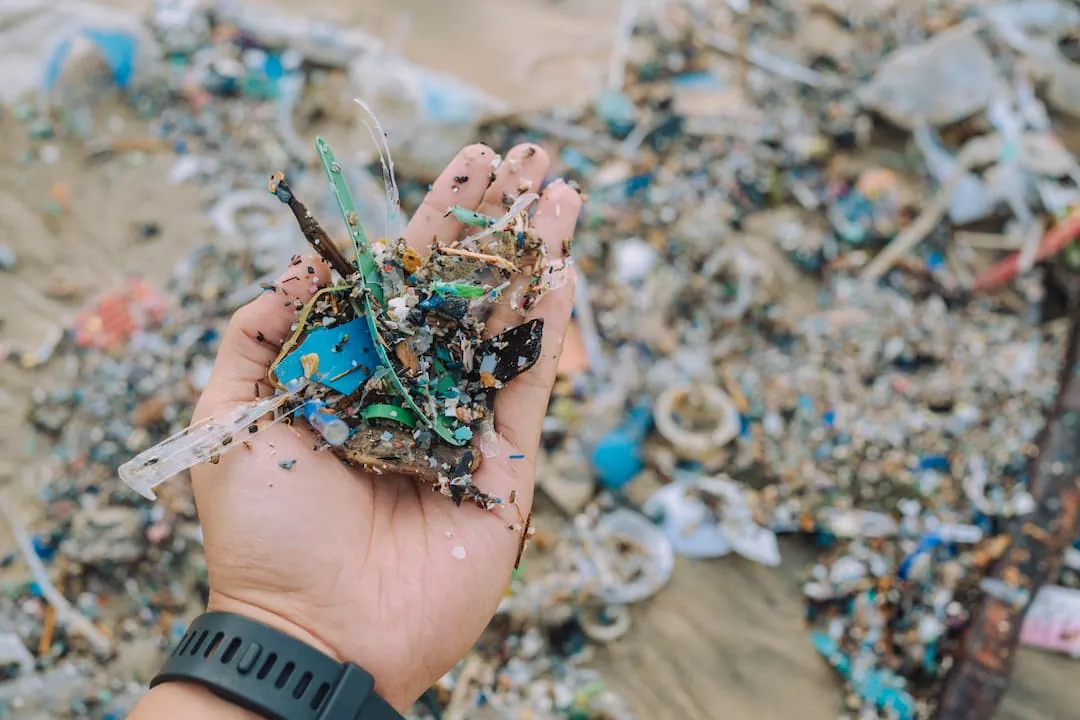 Poverty and Social Impact
Poverty and Social Impact
 Plastic Bank collection community member from Baseco, Tondo, Manila, Philippines.
Plastic Bank collection community member from Baseco, Tondo, Manila, Philippines.
Imagine our ocean suffocating under a relentless deluge of plastic. This is not a scene from a dystopian novel but a stark reality confronting us today. Approximately 400 billion kilograms of plastic waste are produced every year1, and a staggering 11 billion of those find their way into the ocean2, disrupting marine ecosystems and threatening the survival of countless sea creatures.
From the tiniest plankton to the mightiest whales, no creature is spared from the plastic waste plague. What were once pristine waters now serve as a canvas displaying humanity’s neglect, painting a grim picture of the environmental crisis we face. As we stand at this critical juncture, it becomes increasingly clear that our everyday decisions, especially in material consumption, wield the power to change this course.
Your choices matter
Faced with the daunting challenge of plastic pollution, what can we do to turn the tide? Our daily decisions ripple outwards, influencing the health of our planet. Each product we purchase, consume, and dispose of is a vote cast for the kind of world we want to live in. This is the essence of conscious consumerism: understanding that our individual actions, however small they may seem, collectively shape humanity’s environmental footprint.
When we choose products made from sustainable materials or those contributing to environmental recovery and uplifting communities, we are not just buying an item but endorsing a philosophy. A philosophy that respects and regenerates our planet and seeks to achieve social progress. As consumers, we hold immense power to drive change and pave the way for a wasteless world.
Opting for reusable bags over single-use plastic, selecting products in biodegradable packaging, or choosing eco-friendly clothing and accessories are small steps that make a significant impact. A great example of a unique and impactful product is the Nautical Anchor Bracelet from Plastic Bank – a social enterprise that is empowering communities to gather discarded plastic from the environment and use it to pave their paths out of poverty. Let’s delve into its story.
 Plastic Bank’s Nautical Anchor Bracelet with beads made of Social Plastic® and cords from recycled PET bottles.
Plastic Bank’s Nautical Anchor Bracelet with beads made of Social Plastic® and cords from recycled PET bottles.
Impact in every bead
The creation of the Nautical Anchor Bracelet begins with community members who gather plastic waste directly from local beaches, riverbanks, neighbourhoods, and even households. The materials are exchanged as currency at local collection branches for secure income and social benefits, including access to health, work, and life insurance, digital connectivity, grocery vouchers, school supplies, fintech services, and more.
Collected plastic is then processed into Social Plastic® feedstock for reuse in packaging and products. Among these products are the beads used to make the Nautical Anchor Bracelet.
The beads and the cords – made from recycled PET bottles – are brought to Manila City Jail in the Philippines. As part of their livelihood program, the bracelet is handcrafted by Persons of Deprived Liberty (PDLs) – providing a tangible way to connect them with the world beyond their confines while working towards rehabilitation and reintegration into the society.
With a profound story of change and hope, the bracelet is a powerful reminder of how environmental conservation can intertwine with social empowerment.
But the impact of the Nautical Anchor Bracelet doesn’t stop here. With each bracelet purchased, Plastic Bank prevents 10 kilograms of plastic waste from entering the ocean. That’s the equivalent of up to 500 single-use plastic bottles. This elevates the Nautical Anchor Bracelet from just being an accessory to a statement of commitment to environmental and social change.
 Plastic Bank collection community member from Laguna, Philippines.
Plastic Bank collection community member from Laguna, Philippines.
Anchor your commitment to a better world
In a world where the tide of plastic pollution and social inequality seems insurmountable, the Nautical Anchor Bracelet stands out as a testament to the impact that conscious choices can make.
We invite you to join us in making a tangible difference by purchasing the Nautical Anchor Bracelet, learning more about the Plastic Bank movement, or supporting a multitude of other initiatives that aim to regenerate our planet and uplift communities worldwide. Let us continue to unite our efforts, anchoring them in our profound duty of creating a world that is not merely surviving but thriving for generations to come.
This article was originally published on impablog.com.





